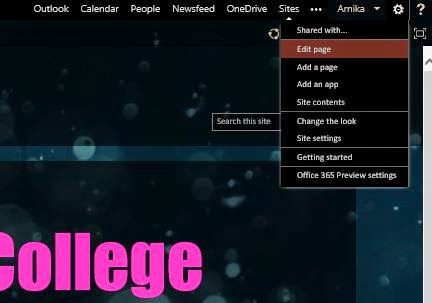Arnika
Brown eLearning Personal Statement
E-learning
is extremely valuable to education. It is a broad term being used globally in
education and refers to any kind of learning using ICT.
Schools need to ensure that the children have access to –
- Up to date Information
Communications Technology hardware and software to allow eLearning to
happen successfully.
- Qualified and
trained staff to ensure learning is enhanced through the use of eLearning
and ICT.
Using technology
I have seen students succeed over and above what they would have without
technology. E-learning gives students the chance to work beyond the classroom
walls and construct knowledge they never had the opportunity to before. E-learning
is not when paper is replaced with a tool. “Simply equipping students with
their own devices and digitising existing curriculum is not the right approach.”
(Dixon, B. et al, n.d.) It is when learning has no boundaries. When eLearning is empowering, students will be engaged in the following
21st century skills: Collaboration, Knowledge Construction, Self-Regulation,
Real-world Problem-solving and Innovation, Use of ICT for Learning, Skilled
Communication (ITL Research, n.d.)
It is not enough to provide
the students and teachers with the concept of eLearning, there is a certain responsibility
that comes with it. In order to implement eLearning successfully across the
school, calculated steps need to be taken. Schools need to ensure they have a
vision. Without vision it can be a long, windy, frustrating road to eLearning implementation.
“Vision and goal
setting is best done after first researching not only other 1:1 initiatives,
but global and economic trends and the reality of the technology rich world in
which today's students live.” (Dixon, B. (n.d). Retrieved from http://www.aalf.org/cms/?page=AALF
- 21 Steps to 21st Century Learning)
Schools may also use a change
model to ensure effective uptake of eLearning. As there will always be a range
of adopters and learners, schools must ensure that they provide adequate
support and guidance for all staff members. “Many innovations require a lengthy period of many
years from the time when they become available to the time when they are widely
adopted. Therefore, a common problem for many individuals and organizations is
how to speed up the rate of diffusion of an innovation.” (Scott, 2012)
The eLearning Planning Framework
includes really positive examples of how eLearning should be used. In order to
ensure all schools are in the empowering phase, there must be a whole school approach.
eLearning is not about 1 Teacher being passionate about ICT and sharing their
experiences. It is about embedding it into the pedagogy and school culture.
E-learning supports
all members of the school community to communicate and opens up opportunities
for collaboration we have not ever had access to before.
Reference list:
Dixon, B. (n.d). Retrieved from http://www.aalf.org/cms/?page=AALF - 21
Steps to 21st Century Learning
Dixon,
B. AALF. Teirney,S. Microsoft Corporation. (n.d) Bring Your Own Device to School.
Microsoft Corporation. United States.
Innovative
Teaching and Learning Research (n.d) 21st Century Learning Design
Student Work Rubrics. Microsoft Corporation


.png)









